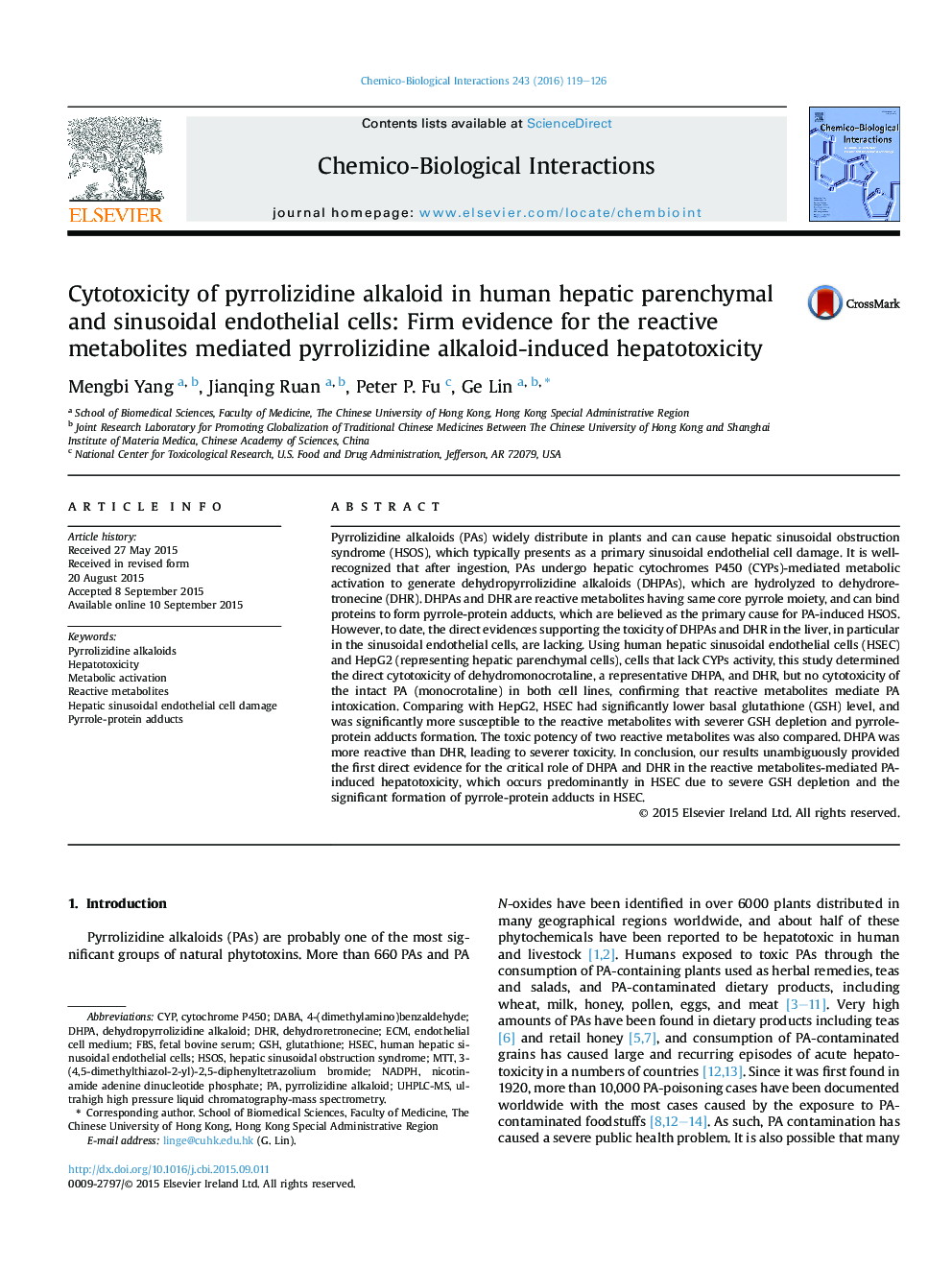| کد مقاله | کد نشریه | سال انتشار | مقاله انگلیسی | نسخه تمام متن |
|---|---|---|---|---|
| 2580091 | 1561598 | 2016 | 8 صفحه PDF | دانلود رایگان |
• Reactive metabolites (DHPA and DHR) of PA but not intact PA exerted hepatotoxicity.
• HSEC were more susceptible to the reactive metabolites compared with HepG2.
• Susceptibility of HSEC correlated to GSH depletion and pyrrole-protein adduction.
• Comparing the two reactive metabolites, DHPA was more toxic than DHR.
Pyrrolizidine alkaloids (PAs) widely distribute in plants and can cause hepatic sinusoidal obstruction syndrome (HSOS), which typically presents as a primary sinusoidal endothelial cell damage. It is well-recognized that after ingestion, PAs undergo hepatic cytochromes P450 (CYPs)-mediated metabolic activation to generate dehydropyrrolizidine alkaloids (DHPAs), which are hydrolyzed to dehydroretronecine (DHR). DHPAs and DHR are reactive metabolites having same core pyrrole moiety, and can bind proteins to form pyrrole-protein adducts, which are believed as the primary cause for PA-induced HSOS. However, to date, the direct evidences supporting the toxicity of DHPAs and DHR in the liver, in particular in the sinusoidal endothelial cells, are lacking. Using human hepatic sinusoidal endothelial cells (HSEC) and HepG2 (representing hepatic parenchymal cells), cells that lack CYPs activity, this study determined the direct cytotoxicity of dehydromonocrotaline, a representative DHPA, and DHR, but no cytotoxicity of the intact PA (monocrotaline) in both cell lines, confirming that reactive metabolites mediate PA intoxication. Comparing with HepG2, HSEC had significantly lower basal glutathione (GSH) level, and was significantly more susceptible to the reactive metabolites with severer GSH depletion and pyrrole-protein adducts formation. The toxic potency of two reactive metabolites was also compared. DHPA was more reactive than DHR, leading to severer toxicity. In conclusion, our results unambiguously provided the first direct evidence for the critical role of DHPA and DHR in the reactive metabolites-mediated PA-induced hepatotoxicity, which occurs predominantly in HSEC due to severe GSH depletion and the significant formation of pyrrole-protein adducts in HSEC.
Journal: Chemico-Biological Interactions - Volume 243, 5 January 2016, Pages 119–126
